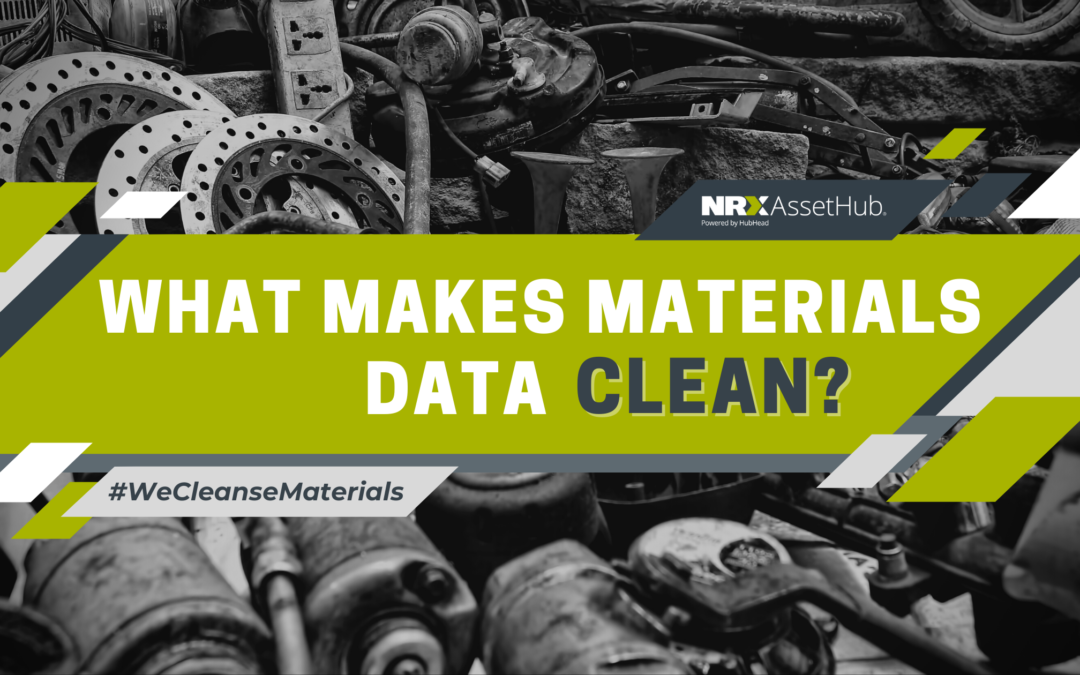In the context of EAM and CMMS systems, there are many ways companies may describe their asset and maintenance data to simplify the complicated ways in which this data is managed. Our recent blogs have been focused on the topic of cleansing your materials data and the importance of clean materials data, but what does it mean to cleanse materials data and what does clean materials data look like?
In the broadest terms, a materials data cleanse is the process of fixing “dirty” materials data – data that is inaccurate, incomplete, irrelevant, obsolete, or duplicated. This is done by removing the data, replacing it, or otherwise modifying the data to correct it.

Spare Parts Are Classified with a Dictionary or Library
Clean materials data is data that has been renamed or reclassified according to a standardized classification system. Organizing the names and attributes of your materials data so that they follow a particular classification system is also extremely helpful for making spare parts easy to find in your EAM system.
Naming Conventions Are Standardized
Maintaining clean materials data involves following a standard so that in the future the way you name and classify your spare parts does not become inconsistent or less searchable. The process of a materials cleanse means introducing these new standards and updating the names, descriptions, and characteristics of the current materials to match these standards.
Duplicate Parts Have Been Deleted
Cleansing your materials data involves locating poor-quality data – which includes duplicated parts – and correcting your materials data so that it accurately matches your spare parts inventory. This means removing spare parts data in your EAM system that no longer exists in real life or parts that have different attributes and characteristics than what exists in your inventory.
Documents Are Organized
Whether you are organizing vendor documents or Bills of Materials (BoMs), a materials cleanse is a chance to bridge the gap between the information in your EAM system and your assets in real life. A materials cleanse can mean synchronizing more comprehensive documents with the spare parts of which they are comprised. This can improve the accuracy and usefulness of documents in your EAM.
The List Does Not End Here!
The list of tasks above is not exhaustive, but it may give you a sense of why a materials cleanse can be a huge undertaking for a company that has tons of spare parts to organize in their EAM system. However, the payoff of a cleanse can be enormous. Clean materials data helps workers navigate spare parts data efficiently and prevents the costly errors that can happen when inaccurate data leads to mistakes.
If you would like to learn more about what it means to cleanse your materials data and how we can help you complete a materials cleanse, please reach out and our team would be happy to help you!
What Do We Mean When We Say Clean?

More Ways to Save Money with a Materials Data Cleanse

Building BoMs with Bad Spare Parts Data

Share this article

